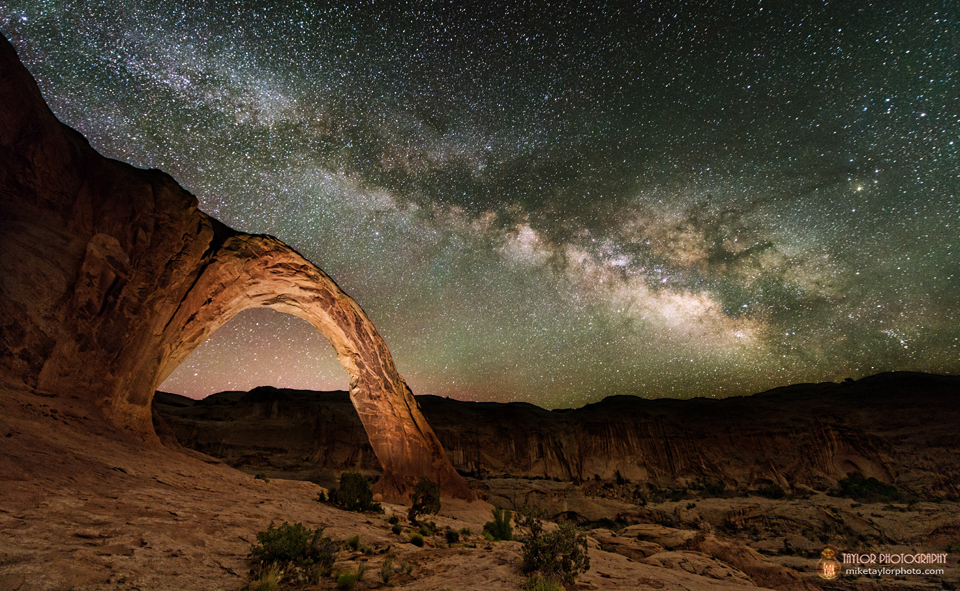How to Spot 5 Cosmic Treats in August Night Sky

Skywatching enthusiasts should be able to see many amazing celestial objects under a clear, dark summer sky.
But what are some of the cosmic sights that are worth looking for, either with the naked eye, binoculars or a small telescope? Many observers will have different opinions about what stars, constellations or nebulas are most worthy of attention, but the five objects listed below might be a good place to start off on a skywatching adventure.
Here are our top five objects to look up for this month:
5. The double-double star
The little constellation of Lyra is supposed to represent Apollo's harp. Six fainter stars form a little geometric pattern of a parallelogram attached at its northern corner to an equal-sided triangle. Vega gleams at the western part of the triangle. The two lowest stars in the parallelogram are Beta and Gamma Lyrae. Beta is sometimes also known as Sheliak. [See spectacular skywatcher photos taken in July 2014]
Epsilon Lyrae is better known as the "double-double" star. On a clear, dark night, observers with exceptionally good vision might be able to see Epsilon as two tiny stars (designated Epsilon 1 and Epsilon 2) that are very close together. Spotting the two distinct points of light with the naked eye is probably only possible for people with near-perfect vision. A pair of binoculars, however, will make the two stars clearly visible.
The cosmic oddity hides an even more amazing sight through a small telescope. When Epsilon Lyrae is viewed through a telescope, each of the two points of light is then revealed as a double star. Sir William Herschel (1738-1822) was the first to notice them in 1779:
Breaking space news, the latest updates on rocket launches, skywatching events and more!
"A very curious double-double star," astronomer William Herschel, the person who first noticed the double-double stars in 1779, said. "At first sight, it appears double at some considerable distance, and by attending a little, we see that each of the stars is a very delicate double star."
So here, in what initially might appear as a single speck of light in the sky, we have a system of four stars, revolving intricately around one another. The two stars that make up Epsilon 1 take at least several hundred years or more to orbit each other. The stars of Epsilon 2 take nearly 1,000 years to circle one another. Meanwhile, both pairs of stars appear to be orbiting each other and have a common center of gravity with a period that probably is on the order of a million years or more.
4. A place to hang your coat
Most amateur astronomers have heard of such beautiful open star clusters as the Pleiades, Hyades and the Beehive. Yet there are other clusters worthy of attention. For example, if you turn your binoculars to the region of the sky roughly halfway between the bright stars Vega and Altair, you will discover a cosmic "coat hanger" star cluster.
This grouping of stars is the brightest of all the star clusters in this part of the sky. I accidentally stumbled across it more than 40 years ago while sweeping up and down the Milky Way with 7 x 35 binoculars.
Others have seen it as a rather curious grouping of about a dozen tiny stars looking very much like an upside-down coat hanger. It is really a proper coat hanger for observers in the Southern Hemisphere, however, where it appears right side up. In a clear, dark sky, you might even be able to spot it with the naked eye as a fuzzy patch of light.
This is one object that is best suited for your binoculars. Even a small telescope with low power will provide too much magnification and will cause the stars to appear too widely spaced apart. [10 Popular Skywatching Misconceptions Explained]
3. A cosmic chrysanthemum
The most celebrated object in the summertime sky is quite possibly the Great Cluster (also called M13) in the constellation Hercules.
To locate M13, look toward the four stars, known as the "Keystone," which supposedly form the body of Hercules. The Great Globular Cluster of Hercules is located between the two western stars of the keystone. It can be seen about a third of the way along a line drawn from the stars Eta to Zeta.
Positioned about 25,000 light-years from Earth, the Hercules Cluster — which is about 160 light-years in diameter — is estimated to play host to tens of thousands of stars.
Today, if you use good binoculars and look toward M13, you will likely see a roundish glow or patch of light. When you use a telescope, the view dramatically improves. With a 4- to 6-inch (10 to 15 centimeters) telescope, the "patch" starts to resolve into hundreds of tiny pinpoints of light. In larger instruments, M13 is transformed into a spectacular celestial chrysanthemum.
In his "Celestial Handbook," Robert Burnham describes the view of the cluster in a 12-inch or larger telescope as "an incredibly wonderful sight; the vast swarm of thousands of glittering stars, when seen for the first time or the hundredth, is an absolutely amazing spectacle."
2. Albireo: gold and blue
Without question, this is one of the most beautiful double stars in the sky. Located in the constellation of Cygnus the Swan, Albireo supposedly marks the swan's beak.
A small telescope, or even a pair of steadily held binoculars, will readily split Albireo into two tiny points of light with beautiful contrasting colors. The brighter one is a rich yellowish-orange, and the other is a deep azure blue, and both are placed very close together. An absolutely stunning view will come with a telescope magnifying between 18 and 30 power. Astronomers think Albireo is a physical pair, although there has never been evidence of any orbital motion between these two colorful stars. The projected separation between the two is a little more than 400 billion miles. At least 55 solar systems could be lined up edge to edge, across the space that separates the two stars that make up this famous double.
1. Our home, the Milky Way
Summertime is undoubtedly the best time to observe the beautiful clouds of the Milky Way.
With a good pair of binoculars or a telescope, you can now see millions of sparkling little stars that make up this glowing, irregular belt of luminosity. In early evenings during summer, the galaxy appears to arch from the north-northeast to the south-southeast, with its brightest and most spectacular region running across the Summer Triangle and beyond, toward the south-southeast horizon. [See incredible photos of the Milky Way]
A great black rift seems to divide it into two streams, beginning with Cygnus and extending down toward the south. A black void called the Northern Coal Sack can also be seen in Cygnus. This Coal Sack and the Rift are not holes in the Milky Way, but rather vast clouds of dust floating out in interstellar space. The objects present a solid and impenetrable curtain between us and more distant stars.
Never visible from large cities with bright lights, smoke and haze, the Milky Way can still be readily viewed from distant suburbs and rural locations. Before the invention of the telescope, the true nature of the Milky Way galaxy was a mystery.
The brightest part of the Milky Way is in the constellation of Sagittarius, near the star El Nasl. In fact, this region is roughly our galaxy's center. It marks the "hub," or central condensation — an area of density and complexity. Even to the unaided eye, the view is one of excitement and beauty. The Sagittarius Star Cloud, about 30,000 light-years from Earth, seems to be the nucleus, with the sun and all the outer stars of the galaxy revolving around it at a rate of 155 miles per second (249 kilometers per second). It apparently takes about 200 million Earth years to make one complete revolution, or one "cosmic year," around the center of our galaxy.
Editor's Note: If you have an amazing skywatching photo you'd like to share for a possible story or image gallery, please contact managing editor Tariq Malik at spacephotos@space.com.
Joe Rao serves as an instructor and guest lecturer at New York's Hayden Planetarium. He writes about astronomy for Natural History magazine, the Farmer's Almanac and other publications, and he is also an on-camera meteorologist for News 12 Westchester, N.Y. Follow us @Spacedotcom, Facebook and Google+. Original article on Space.com.

Joe Rao is Space.com's skywatching columnist, as well as a veteran meteorologist and eclipse chaser who also serves as an instructor and guest lecturer at New York's Hayden Planetarium. He writes about astronomy for Natural History magazine, Sky & Telescope and other publications. Joe is an 8-time Emmy-nominated meteorologist who served the Putnam Valley region of New York for over 21 years. You can find him on Twitter and YouTube tracking lunar and solar eclipses, meteor showers and more. To find out Joe's latest project, visit him on Twitter.
